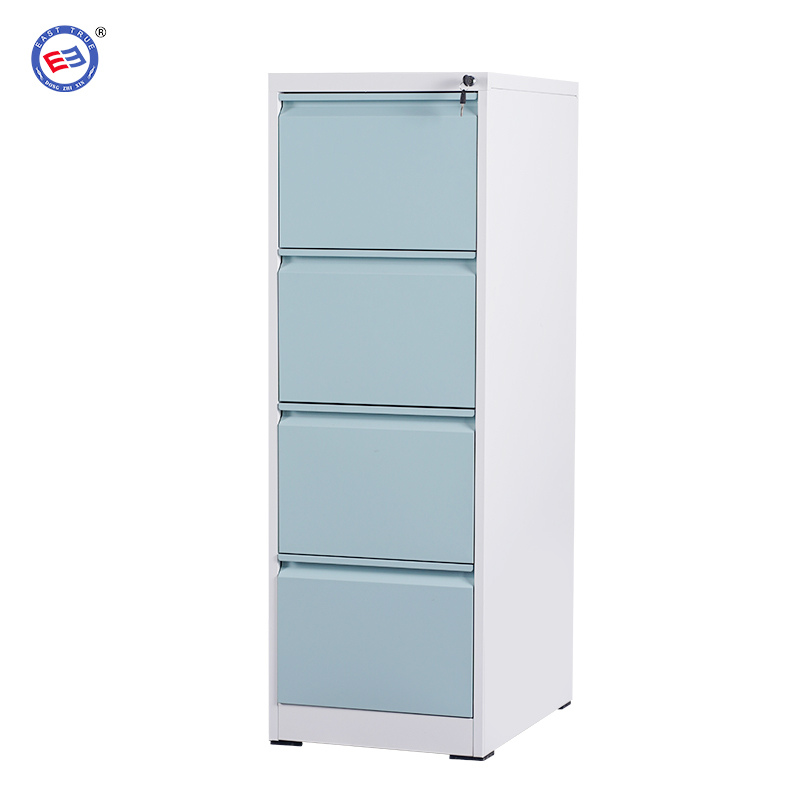Changing the lock on a file cabinet from China is a straightforward process, but it requires attention to detail to ensure security and functionality. Whether you’ve lost the key, want to upgrade the lock for added security, or need to replace a broken lock, this guide will walk you through the steps. Below is a step-by-step process to help you change the lock on a file cabinet effectively.
Why Change a Lock on a File Cabinet from China?
The main reasons for changing locks are as follows:
Lost Keys: If you’ve misplaced or lost the keys to your file cabinet, replacing the lock is a viable solution.
Damaged Lock: Over time, locks can become faulty or damaged, preventing them from functioning correctly. Replacing the lock restores security.
Security Upgrade: If you’re upgrading to a more secure lock or changing the lock type, changing the lock can provide greater peace of mind.
New Ownership: If the file cabinet has changed hands, replacing the lock ensures that previous users no longer have access to confidential information.
Tools You Will Need
Before you begin, gather the following tools:
New lock (replacement lock or upgraded lock)
Screwdriver (usually flathead or Phillips, depending on the cabinet)
Power drill (if the existing lock needs to be removed entirely)
Key (if you are installing a lock with a key)
Locking mechanism (if the cabinet is keyless and uses a combination lock or other mechanism)

Step-by-Step Guide to Change the Lock
1. Assess the Type of Lock
First, examine the existing lock on your file cabinet. Is it a standard key lock, a combination lock, or an electronic lock? The type of lock will determine the replacement process.
Keyed locks are the most common in file cabinets. These are simple to replace with a similar key lock.
Combination locks might require you to reset the combination after installation, or you may need to replace the entire locking mechanism.
Electronic locks will require you to disconnect the old lock and connect the new one according to the manufacturer's instructions.
2. Unlock and Open the File Cabinet from China
Before replacing the lock, ensure the file cabinet is unlocked and open. This makes the process much easier since you will have access to the inside of the cabinet. If you have a combination lock or key lock, unlock it first.
3. Remove the Existing Lock
For Keyed Locks: Use a screwdriver to remove any screws holding the lock in place. Many file cabinets have a small panel or plate that secures the lock mechanism to the cabinet. You may need to remove screws from the exterior of the cabinet or, in some cases, from inside the drawer.
For Combination or Electronic Locks: For combination or digital locks, you will need to remove the mechanism from the inside of the cabinet. This may involve unscrewing several components or disconnecting wires if the lock is electronic.
If the old lock is stuck or difficult to remove, you may need to use a power drill to remove it carefully, though be careful not to damage the cabinet.
4. Prepare the Replacement Lock
If you have a new key lock, make sure the new lock fits the hole left by the old lock. It should be the same size or compatible with the existing hardware.
If you’re upgrading to a combination lock, ensure that the new mechanism is designed for your specific file cabinet model.
For electronic locks, refer to the user manual of your new lock for wiring and installation instructions.
5. Install the New Lock
Keyed Lock: Place the new lock into the hole of the cabinet, aligning it properly with the existing mechanism. Secure it with screws from the outside or inside, depending on the lock’s design. Tighten the screws until the lock is firmly in place.
Combination Lock: If you're replacing a combination lock, install the new lock by placing the locking mechanism in the designated spot. Secure it with screws, and ensure that the combination dial turns smoothly. Follow the manufacturer's instructions to set the new combination if necessary.
Electronic Lock: For electronic locks, follow the specific instructions for wiring and fitting the lock into the door panel. Most electronic locks have a keypad that needs to be secured onto the file cabinet, while the internal mechanism needs to be connected to the lock mechanism inside the cabinet.
6. Test the New Lock
After installing the new lock, it’s important to test it thoroughly. Try locking and unlocking it several times to ensure it functions smoothly. If you installed a key lock, test the key to confirm it turns effortlessly. If it’s a combination lock, try the combination to ensure it unlocks correctly. For electronic locks, make sure the code works and the mechanism responds as expected.
7. Reassemble the File Cabinet from China
Once you’ve confirmed that the lock is working correctly, reassemble any panels or covers that were removed during the process. Tighten all screws and ensure the lock is secure. Make sure the locking mechanism is properly aligned and there are no gaps that could compromise the security.
8. Store the New Keys or Combination Safely
If your new lock uses a key, be sure to store the key in a secure location, such as a key holder or drawer. If it’s a combination lock, write down the combination in a safe place—preferably in a locked area where unauthorized individuals cannot access it.
Troubleshooting Tips
Key won't turn: If the key to your new lock won't turn, the lock may be misaligned or need lubrication. Try wiggling the key gently or applying a small amount of lubricant.
Loose lock: If your new lock feels loose, check that all the screws are tight. If the screw holes are worn, try using larger screws or filling the gaps with wood strips.
Key doesn't match: Check that you received the right lock. You can contact the supplier to replace it or choose a different model If you find a mismatch.
When to call in a professional
While replacing a file cabinet lock is usually a one-person job, there are some situations where you may need professional help:
Locks are integrated into the cabinet: Some file cabinets have locks designed to be incorporated into the cabinet and may require special tools to remove.
Can't find your key: If you have lost your key and can't remove your old lock, a locksmith can help you open or replace the lock.
I'm not sure of the lock model: If you can't find a suitable replacement lock, please consult a locksmith or the file cabinet manufacturer for advice.
Changing a lock on a file cabinet from China is a relatively simple process that enhances the security and functionality of your filing system. By following these steps, you can easily complete the replacement task, saving time and money. Be patient and careful when removing and installing, making sure each step goes smoothly. If you get stuck, seek professional help immediately to ensure your file cabinet is safe and secure.





